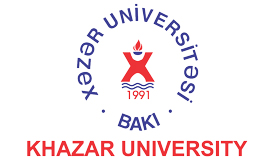International Conference on Materials Science and Research
November 16-18, 2017 Dubai, UAE
Foaming of Chitosan Generated Under Steady State Flow Condition as a Biobased Material for Bone and Tissular Regeneration
University Clermont Auvergne, institut Pascal, France
Thanks to its biodegradability and biocompatibility, chitosan (CS) has great potential to be used in bone tissue engineering and drug delivery. Nevertheless, scaffolds made of CS, must be porous to be used in these biomedical applications. Pore size and interconnectivity between pores have an influence on the foam properties like mechanical strength and cell adhesion. However, when foaming occurs in batch, as the gas comes from the sky of the vessel the control of the density and the pore size distribution will be difficult. The present work aims to study the foaming ability of CS solution alone and with hydroxyapatite (Hap)/ Tetraethylorthosilicate (TEOS) under steady state flow conditions.
A jacketed Narrow Annular Gap Unit (NAGU) system was used for continuous foaming study. CS mixtures and gas were introduced at the bottom of the unit. Mixture flow rate was maintained at 30 ml/min. To obtain foam with different density, gas flow rate was changed from 10 to 70 mL/min. Temperature was maintained constant by the circulation of glycol solution in the jacketed unit. Foaming experiments were carried out using a CS solution and Tween 20 as foaming agent. The experiments were investigated with CS alone or in the presence of Hap and/or TEOS as source of calcium and silice respectively. The influence of operating conditions: gas/liquid flow rates, rotation speed on the density and porosity of final material were studied. The aim is to afford a sample process permitting to obtain reproducible biomaterial with a desired porosity and density for bone and tissular regeneration. Samples were collected for foams analysis (density, bubbles sizes distribution) and freeze dried for mechanical and porosity analysis (DMA, SEM). It was shown that continuous foaming process could be efficiently used to generate new biomaterial with controlled density/porosity as ceramic-like foam.
Biography:
Doctor Cédric DELATTRE is an associate professor in Biochemistry at Institut Pascal UMR CNRS 6602, France since 2012. He built his experience in biochemistry both in international academic institution (Picardie Jules Verne University, France; Vellore Institute of Technology, India) and industrial Setting (Greentech, France). His expertise areas include chemical/synthetic biochemistry, poly- and oligosaccharides biochemistry, enzymology technologies (development of immobilized enzyme for industrial reactor), functional biomaterial including design and development of bioactive polysaccharides, biorefinery, green chemistry. He is author of 62 scientific papers in international peer-reviewed journals, 5 book chapters, 9 international patents, 41 oral presentations in international conferences, h-index 20.



